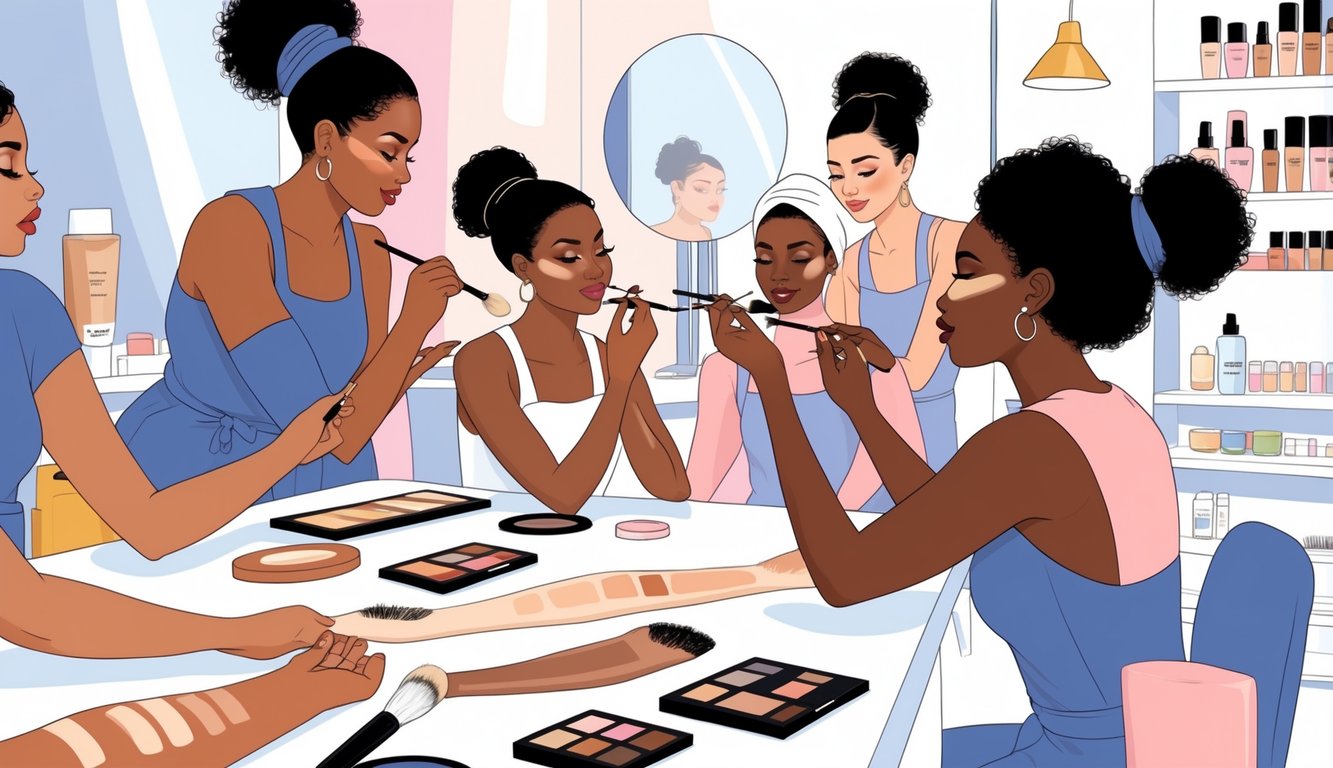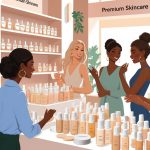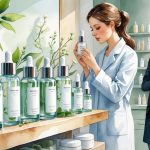Concealer Claims Unmasked by Makeup Artists Right Now
Okay, so, full confession: last time I trusted a “crease-proof” concealer, I looked like I’d tried to spackle my under-eyes with Elmer’s and a prayer. “Flawless finish” on the label? Sure, and I’m a morning person. Is it just me, or do these brands basically dare you to believe their stuff will break the laws of physics? They toss out “impossible coverage with zero texture” like it’s not just marketing nonsense—meanwhile, makeup artists are poking holes in those claims in real time, sometimes literally as the “waterproof” formula melts off under hot studio lights. Kasey Spickard, who’s way more patient than me, actually matches concealer by vein color, not whatever cutesy shade name the brand made up. Checked your undertones lately? Odds are, you’re trusting packaging over pigment (and yeah, artists keep talking about this—see for yourself: finding the right concealer for your undertones).
Here’s what keeps bugging me—why do so many concealers say “mature skin approved,” but then every derm and makeup artist I know just hands you NARS Radiant Creamy Concealer like it’s the only answer, and we all pretend the drugstore stuff isn’t gonna settle into every line by lunch? “Brightening” concealer? Sometimes it just highlights how tired you look. Artists care way more about how it slips and blends than about some filter effect, so next time you see a celebrity’s “poreless” selfie, just remember: twelve pros, ten layers, and a ring light, not a miracle tube.
And, oh, ingredient lists? Novels. Nobody ever talks about the pile of primer or powder under that “smooth” finish. Why do brands promise “all day wear” like we’re not all sneaking off to blot or reapply by 3 p.m.? If your concealer claims to do everything, it’s probably hiding something—let’s get real about what’s missing, and who’s quietly rolling their eyes behind the scenes.
What Makeup Artists Want You To Know About Concealer Claims
Why do brands still think we’ll fall for every “new” concealer hype? Nothing gets old faster than last season’s “miracle” formula. Yet, here we are—people (even in pro masterclasses, I swear) keep buying into it. “Flawless,” “crease-proof”—if those were real, wouldn’t we all look airbrushed by now? Instead, it’s the same creased under-eyes and cakey patches, everywhere I look.
Common Marketing Terms and What They Really Mean
So, every “cult-fave” concealer claims to “hydrate,” but why does my skin feel like the Mojave Desert by 3 PM? “Long-wear” is everywhere, but even celebrity makeup artists complain about formulas melting off under lights. And “full coverage”—don’t even start. Every ad says it’ll hide tattoos, but then they show before-and-afters hiding, like, one freckle.
I read the ingredient lists—“brightening” almost always means mica for shimmer, which is not what TikTok means by “no-makeup makeup.” “Non-comedogenic”? That’s code for “we hope it won’t break you out, but we haven’t actually checked.” I saw “self-setting” last week—so, what, it just dries? Groundbreaking.
Ni’Kita Wilson, a cosmetic chemist, told Allure that most “natural” concealers use basic science and preservatives, nothing rare. So, yeah, I squint at any tube promising the moon.
Top Misconceptions Debunked
People in my chair always blame themselves for creasing—“I must be applying it wrong.” Nope. Creasing happens on everyone, teenagers and models included. “Creases less” is just marketing; the fine print always says any thick formula settles if you pile it on.
Another thing—people think celebrity makeup artists only use luxury stuff. Not true. Katie Jane Hughes literally demonstrated on camera that it’s about where you put it, not which “cult” concealer you buy. Layering formulas? Usually just adds texture, not magic.
Maybe the real “secret” is a thin swipe, blended with fingers, and skipping the fancy brush. Dry patches? Usually from too much powder and high expectations. “Won’t emphasize texture” is everywhere, but read a few Who What Wear tips and you’ll see most artists just avoid matte formulas if they want skin to look like, well, skin.
Decoding Coverage: From Sheer to Full

Hyperpigmentation glaring at me, powder dust in the air—brands toss out “full coverage” and “lightweight consistency” like we won’t notice the product caking up or sliding off by noon. Usually it’s the formula, the pigment level, and, honestly, whether it’s humid out, not the label.
Sheer and Lightweight Coverage Explained
Everyone’s chasing that “barely-there” look—“sheer” or “lightweight coverage” is supposed to be the answer for fine lines or redness, or just not wanting to look like a statue. Most sheer concealers brag about breathability (influencer lingo), but if you’ve got dark circles or serious discoloration, good luck. Creamy texture doesn’t mean real coverage.
Lightweight stuff like Glossier Stretch or Kosas Revealer always promise “soft-focus” magic. Do they ever actually cover anything major? Not really. They move with your skin, which is fun until you try to hide an old scar or melasma. Oily skin? My clients say it’s gone before lunch. Sure, “build it up,” but after one layer disappears, the rest cakes up. “Non-comedogenic” on the box? More wishful thinking than science.
Medium to Full Coverage Claims
When a tube screams “full coverage,” I brace myself. Brands confuse “medium to full” with “thick and heavy,” but pros know it’s about pigment and slip—how the color moves in a creamy base, not how heavy it feels.
RCMA palettes? They cover stubborn circles, blend out invisibly, and don’t shout about “airbrush” anything. “Buildable” sounds great, but full coverage formulas just paint over texture, sometimes making dryness more obvious. Artists I trust go for flexible formulas that don’t crumble when layered, which matters if you want that medium-to-full sweet spot. Daylight or car mirror? Opaque concealers show every dry patch.
Even the “best” products (see recommended palettes and finishes)—don’t trust every “flawless base” claim. For every rave review, there’s a patch of creasing after two hours. It’s never that simple, and it never stays put.
Buildable Coverage: Truths vs. Hype
Every counter pushes “buildable coverage” like it’s magic—just layer it up, right? Reality: after three layers, it’s patchy or pilling, not perfect. If a concealer claims “buildable” and “lightweight,” try going over it with a brush, then a sponge. I’ve watched formulas bead up and flake off like eraser bits.
Pigment concentration matters way more than brands admit. High pigment? Less layering, but also less room for blending mistakes. A makeup artist once told me, “If it covers a tattoo in one swipe, your undereye isn’t special.” I test every new launch on my wrist—if it streaks, “buildable” is a fantasy.
And those YouTube “wear tests”—most people aren’t in a studio. If it can’t survive a sweaty subway ride, it’s not buildable; it’s barely hanging on. Brushes, sponges, fingers—each tool exposes how “soft-focus” easily turns to patchwork. Weirdly, some of the best buildable formulas are pro-only, never hyped online, because real results don’t trend.



